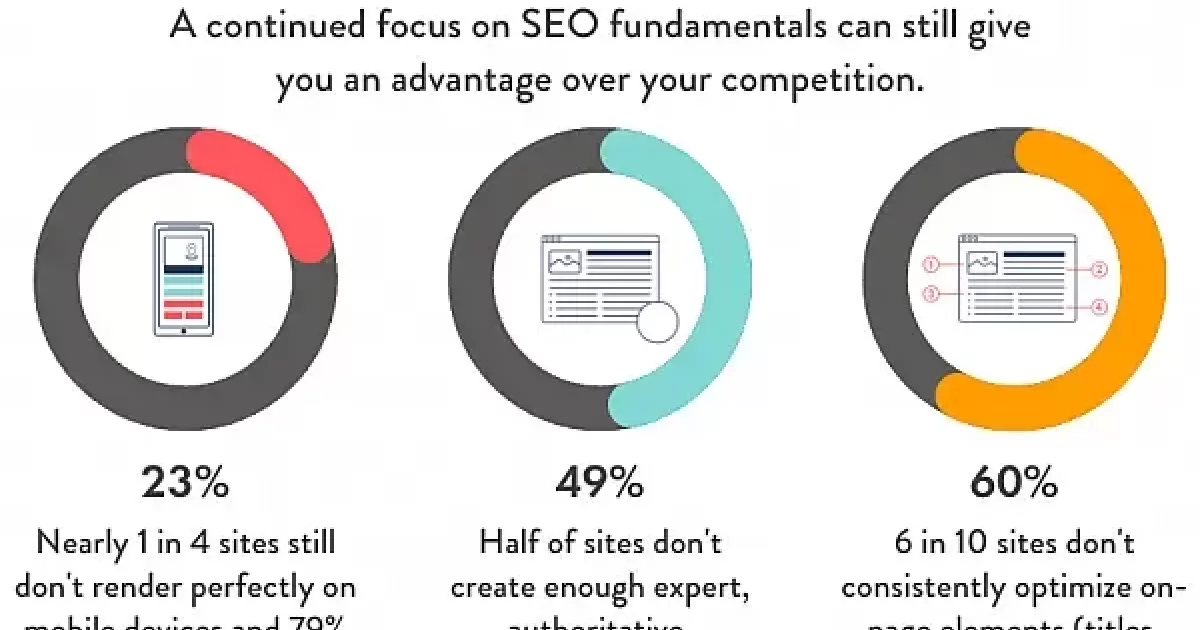Unlock the secrets of SEO success with these essential tips and tricks to take your website to the next level.

Image courtesy of via DALL-E 3
Table of Contents
Introduction to SEO
When you have a website, you want people to be able to find it easily. That’s where SEO comes in. SEO stands for Search Engine Optimization, and it’s all about making your website show up higher in search engine results. Think of it as giving your website a boost so more people can discover it.
What is SEO?
SEO is like a secret code that you use to help search engines like Google understand what your website is all about. By using specific keywords and following certain rules, you can make sure that your website appears when someone searches for things related to it.
Why is SEO important?
Imagine you have a lemonade stand, but it’s hidden in a secret alley where no one can see it. That’s what a website without good SEO is like. Good SEO helps your website get more visitors by making it easier for people to find you when they are searching for something you offer. It’s like putting up a big sign that says, “Hey, I’m here!”
Choosing the Right Keywords
When it comes to improving the SEO of your website, choosing the right keywords is crucial. Keywords are the words or phrases that people type into search engines like Google when looking for information. To boost your website’s visibility, you need to find popular search terms related to your content.
One way to discover popular search terms is to put yourself in the shoes of your audience. Think about what words they would use to find your website. You can also use tools like Google Trends to see what topics are trending and what keywords people are searching for the most.
Using Keyword Tools
To delve deeper into keyword research, you can use tools like Google Keyword Planner. This tool allows you to input your ideas and receive suggestions for related keywords that are commonly searched for. By analyzing search volume and competition for specific keywords, you can determine which ones are most valuable for your website.
Remember, the key is not just to pick any keywords but to select the ones that are relevant to your content and have a decent search volume. By strategically incorporating these keywords into your website’s content, you can increase the likelihood of your site appearing in search results and attracting more visitors.
Creating Quality Content
When it comes to creating quality content for your website, one of the essential aspects is writing interesting blog posts. Blog posts are a great way to engage with your audience and provide valuable information. To make your blog posts interesting, consider writing about topics that are relevant to your audience and offer helpful insights. Tell stories, ask questions, and provide tips that can benefit your readers.

Image courtesy of www.linkedin.com via Google Images
Using Keywords Naturally
Integrating keywords into your content is crucial for SEO, but it’s important to do so naturally. Avoid stuffing keywords into your writing as this can make it sound robotic and unappealing to readers. Instead, seamlessly incorporate keywords into your content in a way that flows naturally. Write for your audience first, and then optimize for search engines by strategically placing keywords throughout your content.
Improving Website Structure
When you visit a website, you want to easily find what you are looking for, right? Well, that’s why having clear menus on your website is super important. Menus are like road signs that guide visitors to different pages of your site. Make sure your menus are organized logically so that people can navigate your website without getting lost.
Using Headings Correctly
Headings are like titles for different sections of a webpage. They help both visitors and search engines understand the structure of your content. It’s like having a book with chapters – it makes it easier to know what each part is about. Use headings like H1, H2, H3 to organize your content and make it more readable for everyone.
Optimizing Images
When it comes to building a website, using images is a fantastic way to capture the attention of your visitors. However, it’s crucial to optimize your images properly to ensure they enhance your website’s performance and SEO. Let’s explore some key tips on how to optimize images effectively.

Image courtesy of www.workshopdigital.com via Google Images
Choosing the Right File Sizes
One essential aspect of image optimization is selecting the appropriate file sizes. Using high-resolution images may look beautiful, but they can significantly slow down your website’s loading speed. This can lead to visitors getting impatient and leaving your site. To prevent this, it’s recommended to resize and compress your images to keep the file sizes as small as possible while maintaining quality. By reducing the file sizes, your website will load faster, providing a better user experience and potentially boosting your SEO rankings.
Using Descriptive File Names
Another crucial step in optimizing images for SEO is using descriptive file names. Instead of using generic names like “image001.jpg,” it’s beneficial to name your image files with relevant keywords. For instance, if you have a picture of a cute kitten on your website, consider naming it “adorable-kitten.jpg.” This not only helps search engines understand what the image is about but also improves the chances of your image appearing in relevant search results. By incorporating keywords into your image file names, you can enhance your website’s SEO and attract more organic traffic.
Mobile Friendliness
In today’s digital age, more and more people are using their smartphones and tablets to browse the internet. This means that it is crucial for websites to be mobile friendly, or in other words, to look and work well on mobile devices like phones and tablets.
Why Mobile Matters
Having a website that is mobile friendly is important because it allows you to reach a larger audience. When your site is easy to navigate on a mobile device, users are more likely to stay longer and explore what you have to offer. Plus, search engines like Google give preference to mobile-friendly websites in their search results, so having a responsive design can help improve your website’s SEO.
Testing Mobile Friendliness
One way to ensure that your website is mobile friendly is by using tools like Google’s Mobile-Friendly Test. This tool allows you to enter your website’s URL and see how it looks on different mobile devices. It will also provide you with suggestions on how to improve the mobile experience for your users.
Building Backlinks
Backlinks are an essential part of SEO that can help your website get more traffic. Let’s explore what backlinks are and how you can use them to boost your website’s search engine optimization.

Image courtesy of www.thehoth.com via Google Images
What are Backlinks?
Backlinks are links from other websites that direct users to your site. Think of them as recommendations or votes of confidence from one website to another. When a reputable site links to yours, search engines like Google see it as a positive signal, indicating that your content is valuable and trustworthy.
How to Get Quality Backlinks
Getting quality backlinks is crucial for improving your website’s SEO. Here are some effective methods to acquire backlinks:
1. Create valuable content: Producing high-quality, engaging content that offers valuable information or entertainment can naturally attract backlinks from other websites.
2. Guest blogging: Writing guest posts for other websites in your niche can help you earn backlinks back to your site. Just make sure the websites you contribute to have good authority and relevance to your own.
3. Engage with influencers: Building relationships with influencers in your industry and getting them to mention or link to your content can significantly boost your backlink profile.
4. Broken link building: Find broken links on other websites that lead to content similar to yours and reach out to the website owner to suggest replacing the broken link with a link to your content.
By actively seeking out opportunities to earn backlinks from reputable sources, you can enhance your website’s credibility and authority in the eyes of search engines, ultimately improving your SEO performance.
Monitoring SEO Performance
Tracking the performance of your SEO efforts is essential to understand how well your website is optimized for search engines. By monitoring SEO performance, you can identify what is working well and what areas need improvement.
Using Google Analytics
Google Analytics is a powerful tool that provides valuable insights into your website’s traffic and user behavior. By setting up Google Analytics on your site, you can track key metrics such as the number of visitors, where they are coming from, and how they interact with your content.
Checking Keyword Rankings
One way to measure the effectiveness of your chosen keywords is to monitor your keyword rankings in search engine results. Tools like SEMrush or Ahrefs can help you track the position of your keywords over time and see if they are helping your website show up in search results.
Conclusion
In conclusion, implementing effective SEO strategies is crucial for improving the visibility and performance of your website. By incorporating the right keywords, creating quality content, optimizing your website structure, images, and ensuring mobile-friendliness, you can significantly enhance your website’s SEO. Additionally, building backlinks and monitoring your SEO performance through analytics are essential steps in maintaining and improving your website’s search engine rankings.

Image courtesy of venngage.com via Google Images
Recap of SEO Tips
Throughout this article, we discussed the importance of SEO and provided valuable tips on how to elevate the SEO of your website. Remember to choose the right keywords, create quality content, improve your website structure, optimize images, ensure mobile-friendliness, build backlinks, and monitor your SEO performance to achieve better results.
Encouraging Action
Now that you have learned about the essential aspects of SEO, it’s time to take action and implement these strategies on your own website. By following the tips and guidelines shared in this article, you can make significant improvements to your website’s SEO and attract more visitors. Start applying what you have learned today and watch your website climb the search engine rankings!
Frequently Asked Questions (FAQs)
How long does it take to see SEO results?
SEO improvements can take some time to show results. It’s like planting seeds in a garden – you need to nurture your website with good SEO practices and give it some time to grow. Be patient, and you will start to see the benefits of your efforts over time.
Can I do SEO by myself?
Absolutely! Basic SEO tasks can be handled on your own. By following the tips we’ve discussed in this article, like choosing the right keywords, creating quality content, and optimizing your website structure, you can improve your website’s SEO without needing to hire a professional. With some time and effort, you can elevate the SEO of your website all on your own.







